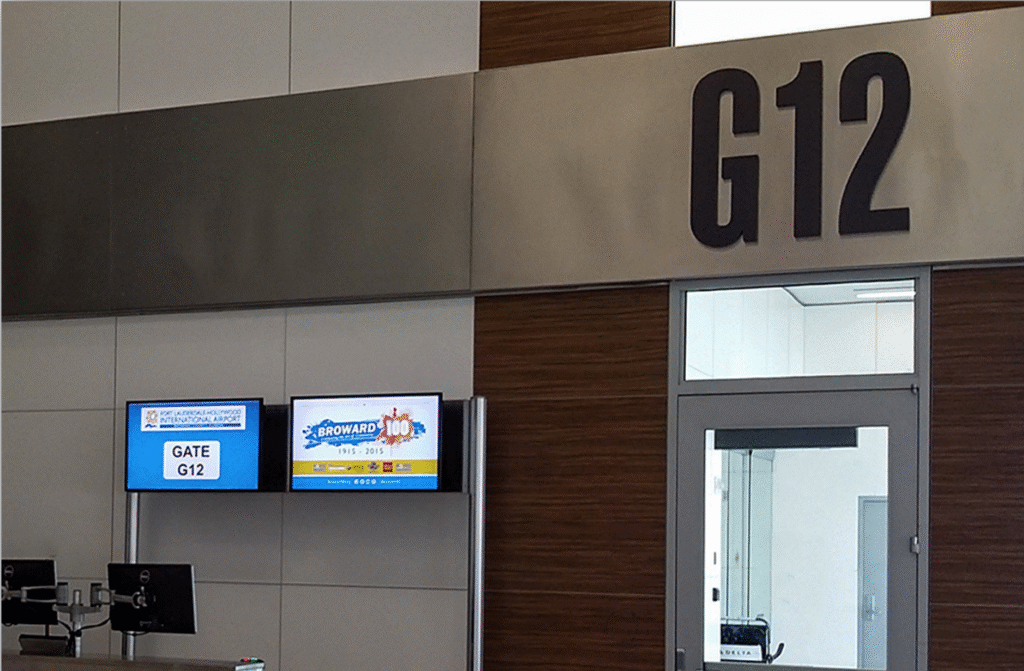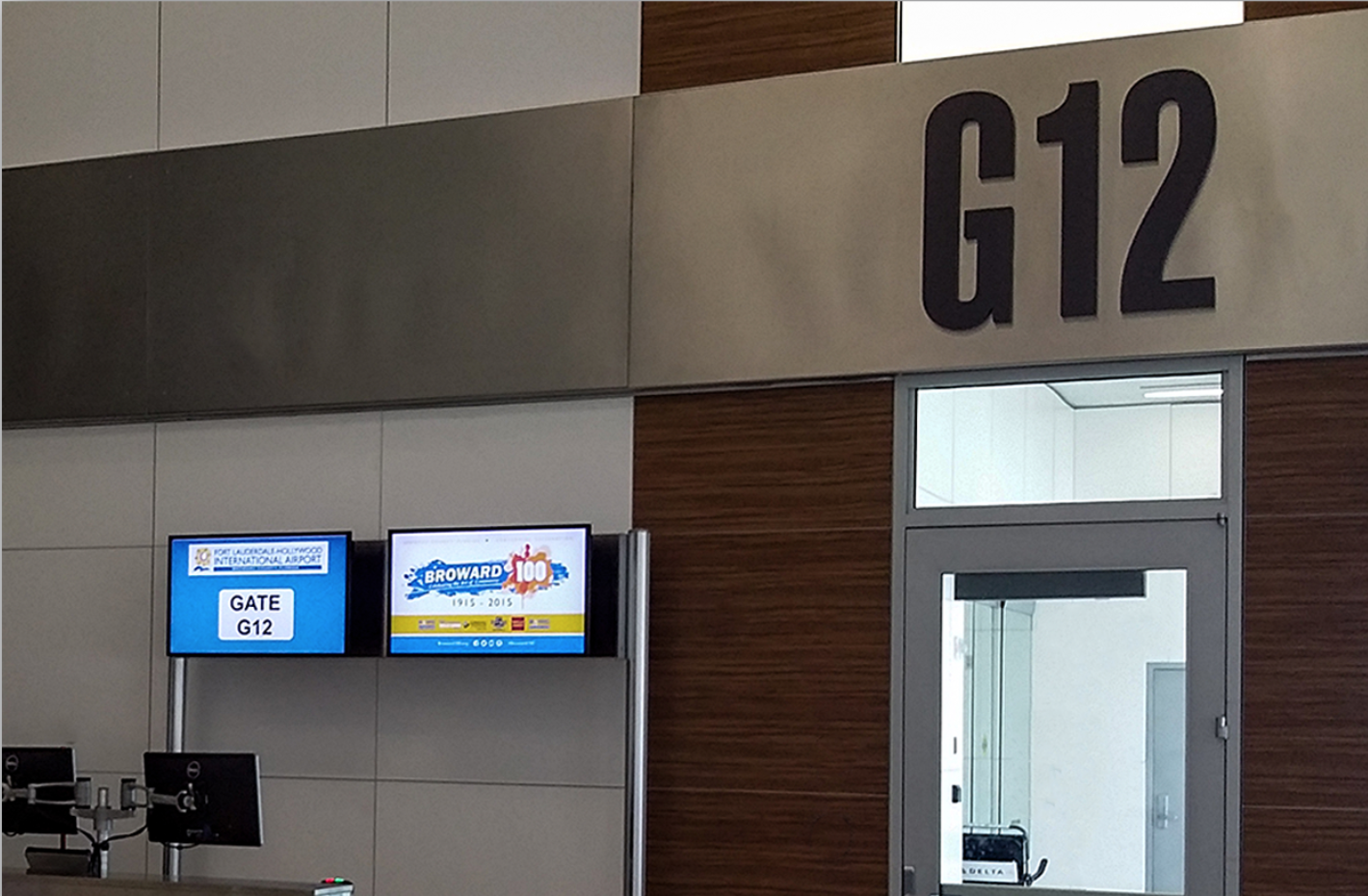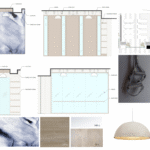
6 Ways To Use Airport Wayfinding To Impress and Guide Travelers
Many people consider flying to be a stressful experience. You have to get to the airport several hours early, navigate through security, and contend with hundreds of other stressed-out passengers. With all the fuss over getting to your destination, it can be hard to appreciate the small details, like airport wayfinding, that help you along the way.
Airport wayfinding can make the travel process smoother and less stressful for fliers, and when done effectively, it can even create a fun and engaging experience for travelers.
Consider these six ways that airports can use wayfinding to guide passengers and improve the travel experience.
1. Create a Positive First Impression
Within the first few seconds of walking into an airport, passengers will decide whether the experience is stressful or enjoyable. There are dozens of factors that play into this. The size of the airport and the crowds play a factor, but so does the wayfinding. If travelers feel lost and unable to find the signs they need to reach ticketing or drop off their bags, then their experience will quickly sour.
Interestingly, wayfinding moves far beyond commercial signage and directions. It creates a sense of purpose and represents the airport’s brand – and you might be surprised at how important a brand is to an airport.
For example, the Portland Airport is known for its carpet. It has a cult following to the point where the airport carpet even has its own Wikipedia page. The carpet gives travelers a feel for the city and a sense of the airport brand, setting the tone for how passengers navigate to and from their flights.
2. Make the Security Process Seamless
Once travelers have their tickets and check their bags, they’re ready to move from the first impression to the TSA checkpoint.
Most customers judge an airport by its security process. If the TSA and customs checkpoints are clogged, disorganized, and difficult, then passengers will take that feeling with them throughout the experience. Furthermore, the security checkpoint is the most stressful part of travel for many passengers. In a study of more than 1,700 British citizens, 47% of travelers said that passing through security was one of the most stressful parts of air travel. The security process even beat out the fear of flying, with only 35% of travelers saying the landing of the plane is the most stressful part.
In this case, airport wayfinding guides passengers to the right lanes, but also provides instructions. Should their shoes come off? Are jackets okay to wear? If your wayfinding can shave a few seconds off of each passenger’s security experience, you can move the lines much faster over the course of a day.
3. Give Customers a Space to Regroup
Once passengers leave the security area, they need a space to regroup and recompose. This is the process of putting shoes back on, tucking away your ticket and ID to a safe area, getting back with your family as a group, and determining where to go next.
When airports lack this type of area, it can create bottlenecks where passengers try to compose themselves right at the TSA checkpoint, blocking other travelers from getting by.
The composure area is also part of a more subtle wayfinding experience. By setting up some benches and chairs in a comfortable setting, passengers will be naturally drawn to the area. Airports don’t need big signs that say, “put your shoes back on here.” This form of wayfinding is also part of the airport’s brand. The structure of the composure area reflects the style and design of the concourse.
4. Take Advantage of the “Golden Hour”
Most airlines recommend arriving at the airport at least 90 minutes before departure. This gives travelers time to get through long ticketing and security lines before boarding.
However, for many travels (especially in smaller airports or those who arrive earlier), there is a significant amount of spare time before liftoff. In the airport world, this is called the Golden Hour. During this time, passengers can pick up a meal or coffee, go shopping, relax in the concourse, and enjoy other amenities.
Wayfinding during the Golden Hour is essential for airport profits. Signs, sounds, and smells can lure customers to make impulse buys and guide them through the shopping experience. Within larger airports, maps and guides help people see food options and where they are located, making it easier for them to find their top dining or drinking choice.
5. Provide Relevant Gate Information
As the Golden Hour comes to a close, passengers head to the gate. Even within this simple process, various airlines and airports have specific wayfinding options set up.
For example, when flying Delta in the Atlanta airport, there are signs for each boarding zone (from Sky Priority to Comfort+ and the main cabin) which allows travelers to form lines. In the Tampa airport, gates also include weather information related to the destination and the estimated boarding time for some flights.
Airport wayfinding is the process of evaluating what information travelers need and how to present it as clearly and easily as possible.
6. Guide Travelers Through the Arrival Process
Think about how you feel when the plane touches down in a new city. You may be tired from the travel and ready to get off the plane, but you may also feel excitement and nervousness about your destination. You will need to find your bags and access the right transit into the city. Even beyond the airport, there are hundreds of challenges that lie ahead. This stress is compounded even more when you land in a foreign city with different languages and currency.
Airport wayfinding is meant to reduce the stress of this process. It should easily guide customers to baggage claim and through customs if necessary. Once the passengers are ready to leave, clear transit signage can guide travelers to city buses, trains, taxi services, rental cars, and tourism services.
The airport is often a traveler’s first impression of the city. If the airport is stressful, then the entire trip starts off on the wrong foot.
Consider Every Step of the Airport Wayfinding Experience
Wayfinding is an essential part of the airport experience. The first thing most passengers do as they walk to the gate or enter a new city is to look for signs to guide them. Most passengers will pass dozens (if not hundreds) of signs as they travel to their destination.
Consider the wayfinding experience that your airport creates. If it needs to be improved, we’re here to help. Contact Creative Sign Designs today and schedule a consultation to get started.





